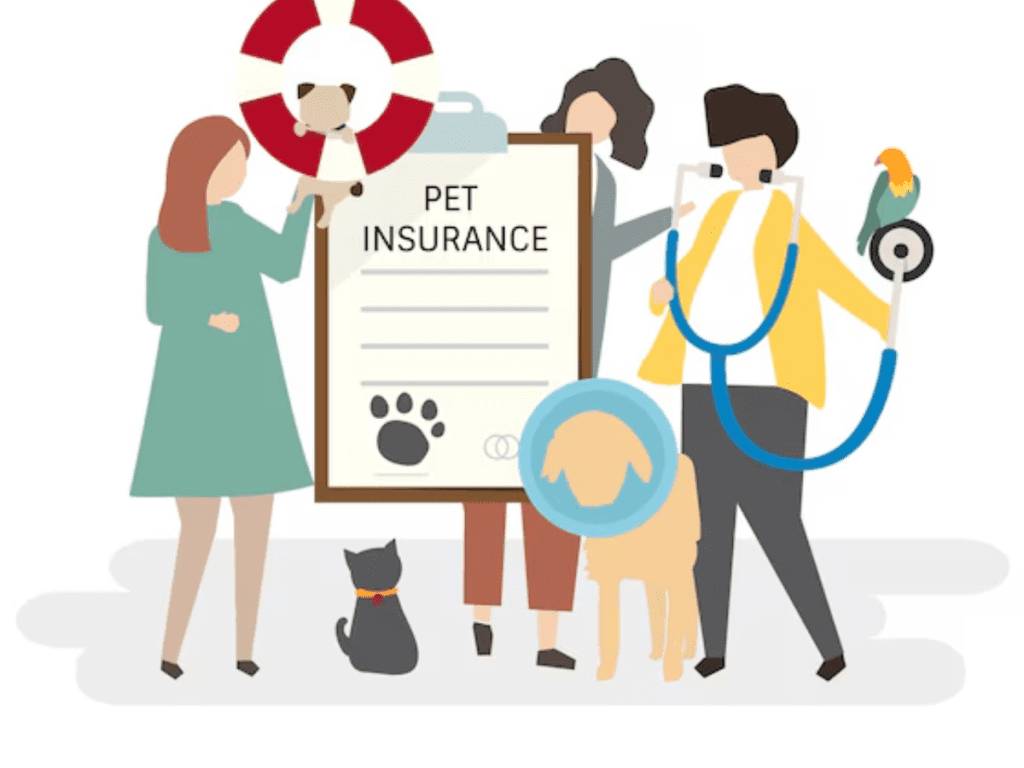Introduction
Owning a pet is a rewarding experience filled with love, companionship, and joy. However, along with the emotional bond comes the responsibility of ensuring their well-being. Just like humans, pets require medical attention, whether for routine check-ups, vaccinations, emergencies, or chronic illnesses. Unfortunately, veterinary care can be expensive, and unexpected medical emergencies can strain a pet owner’s finances.
Pet insurance serves as a safety net, helping pet owners manage the rising costs of veterinary care while ensuring their furry companions receive the best possible medical treatment. In this article, we’ll explore why pet insurance is crucial, how it works, the different types of coverage available, and the long-term benefits of investing in a policy for your pet.
1. The Expanding Costs of Pet Veterinary Care
Veterinary medicine has experienced great growth over the past decade. Many procedures and treatments, previously exclusive to humans, are now offered. The positive effect on pet health and longevity, though impressive, does not come cheap.
A simple consultation by a vet could range from $50 to $100. Procedures that are very complicated, including surgeries, chemotherapy, or even an MRI would be thousands of dollars.
Example:
Emergency surgery may run anywhere between $1,500 to $5,000. It varies on the intensity of the issue.*Chemotherapy in the treatment of cancer could go from $3,000 to $10,000 or higher.
- Hip dysplasia surgery, which is common in some breeds of dogs, can cost $4,000 to $6,000 per hip.
Without pet insurance, these costs can be overwhelming for many pet owners. Having an insurance policy helps mitigate these financial burdens, ensuring pets receive timely and appropriate care without hesitation.
2. Protection Against Unexpected Medical Expenses
Accidents or acute illness do not choose to visit, so often, accidents bring about some bad news; this may range from your pet having ingested something that might lead to further severe infections. Injury may come to a pet because of accident-related cases; treatment, if rushed, calls for emergency measures which may turn expensive.
Pet insurance helps to financially protect against such emergencies, covering a large part of the vet bills. Instead of worrying about the affordability of treatment, pet owners can focus on their pet’s recovery. Some policies even include coverage for alternative treatments like acupuncture, hydrotherapy, and rehabilitation, which can be essential for recovery after surgeries or injuries.
3. Coverage for Chronic and Hereditary Conditions
Certain breeds are predisposed to specific health conditions that require long-term management. For instance:
- Labrador Retrievers are prone to hip and elbow dysplasia.
- Persian cats often suffer from respiratory issues.
- Dachshunds are susceptible to intervertebral disc disease (IVDD).
- Bulldogs and Pugs commonly experience breathing difficulties.
Managing chronic and hereditary conditions can be costly, especially when they necessitate frequent vet visits, medication, special diets, and sometimes surgery. Chronic and hereditary conditions coverage through pet insurance helps reduce the burden of these costs, ensuring that pets receive ongoing care throughout their lives.
4. Preventive and Routine Care Coverage
Many pet insurance companies include wellness plans for preventive care: vaccinations, regular check-ups, dental cleanings, flea and tick treatments, and spaying/neutering. Preventive care investment increases the chances of detecting health problems early, lowering the risk for more serious conditions and higher cost.
Routine check-ups also ensure that pets maintain good health and receive necessary vaccinations to prevent diseases such as rabies, distemper, and parvovirus. While wellness plans might require an additional premium, they can save money in the long run by keeping your pet healthy and reducing emergency visits.
5. Access to Quality Veterinary Care
When money doesn’t matter anymore, pet owners can make a decision based upon what is ideal for their dog rather than something that is less expensive. As a result of pet insurance, owners can engage in the veterinary care that should be provided-consultations from specialists and radiographic diagnostics-MRIs, CT scans, and genetic analysis.
Some policies also offer holistic treatments such as physiotherapy, chiropractic care, and acupuncture that can be very helpful for pets recovering from injuries or chronic pain.
6. Customizable Plans to Fit Different Needs and Budgets
Pet insurance companies have different coverage options to cater to various needs. Some of the common types of pet insurance plans include:
a) Accident-Only Plans
These plans include expenses for medical attention due to accidents, including broken bones, fractured limbs, and swallowing of a foreign object. They are relatively cheaper but exclude illnesses and well-care services.
b) Comprehensive Coverage Plans
These insurance coverages range from accidents and illnesses, including chronic conditions, hereditary diseases, surgeries, and even prescription medications. They offer the widest range of coverages and are well-suited for pet owners who will need all-around protection.
c) Wellness and Preventive Care Plans
These plans include regular check-ups, vaccinations, dental cleanings, and preventive treatments. They may not cover emergencies, but they ensure that pets are healthy and prevent costly illnesses.
Since different pets have different medical needs, having the option to customize a plan ensures that pet owners only pay for what they need while still getting adequate coverage.
7. Financial Security and Peace of Mind
The most important advantage of pet insurance is the peace of mind that comes with it. Unexpected medical expenses can cause financial stress, especially if a pet requires expensive emergency treatment. With pet insurance, owners can make medical decisions based on what’s best for their pet rather than what they can afford.
Furthermore, pet insurance removes the tough decision of placing a pet’s health at risk because of the financial constraint. Instead of deferring treatment or choosing less effective solutions, owners can proceed with necessary treatments without fear.
8. Support for Older Pets
Older pets tend to experience conditions like arthritis, kidney failure, and impaired vision. Treatment of these problems for older pets often involves hefty medication and expensive treatments. Many insurance policies permit a pet to be covered regardless of age; however, their premium will tend to rise as the pet gets older.
9. Alternative and Emergency Services Coverage
Besides the typical medical care, pet insurance often includes coverage of other things: emergency boarding fees if the owner has to go to the hospital and cannot look after their pets; lost pet advertising and rewards if a pet is lost; end-of-life care and euthanasia-when it’s time to let go.
These extra benefits can really come in handy when unexpected situations arise, ensuring your pet will be well taken care of.
10. How to Choose the Right Pet Insurance Plan
Choosing the right insurance policy for your pet is quite a task, since the available plans differ from one another in terms of the coverage they offer. Here are some key considerations for selecting a pet insurance plan:
a) Coverage Options
The costs of medical care vary with each pet insurance policy. Some cover only accidents, while others are comprehensive, covering illness, hereditary conditions, and routine care. Evaluate your pet’s needs before purchasing a plan based on breed, age, and medical history.
b) Cost vs. Benefits
The premium costs vary with regard to the pet’s age, breed, and location, and also with regard to the degree of coverage. Though a high premium may bring higher coverage, one needs to decide whether that would be justifiable in relation to the money paid. Compare the various policies, and ascertain if the degree of coverage would meet your budget and expectations.
Most pet insurance companies offer varying deductible options, from $100 to $1,000. A low deductible results in high monthly premiums, but a high deductible reduces the monthly fee and increases out-of-pocket charges at the time of a claim. Furthermore, policies often utilize reimbursement rates of 70%, 80%, or 90%, which means that after meeting the deductible, the insurance company will cover a percentage amount of the vet bill.
d) Exclusions and Limitations
Pet insurance policies often have exclusions, such as pre-existing conditions, elective procedures, and certain hereditary diseases. Read the fine print carefully to understand what is covered and what isn’t to avoid surprises when making a claim.
e) Waiting Periods
Most pet insurance policies have a waiting period before coverage begins, typically ranging from 2 to 14 days for accidents and 14 to 30 days for illnesses. If your pet requires immediate medical attention, insurance may not cover those costs if the waiting period hasn’t passed.
f) Customer Reviews and Reputation
Before investing in a policy, check the reputation of the insurer, reviews of other customers, and the claim approval process. A company with a transparent claims process and good customer experiences is more reliable in the long run.
11. Common Myths About Pet Insurance
There are many myths about pet insurance that discourage many pet owners from investing in a policy. Let’s debunk some of the most common myths:
Myth 1: Pet Insurance is Too Expensive
Most pet owners assume that pet insurance is a cost they cannot afford. However, in comparison with the cost of emergency treatments, one can clearly see that it saves thousands of dollars in the long run. There are budget-friendly plans that cater to the different budgets of people, and some policies are as low as $20 to $50 per month.
Myth 2: It’s Better to Save Money
Instead of Buying Insurance Saving money for emergencies is always a good idea, but veterinary bills can pile up quickly. If a pet requires a $5,000 surgery, it might take years to save up that money, whereas pet insurance will pay most of the costs immediately.
Myth 3: Pet Insurance Covers Everything
Comprehensive pet insurance plans cover almost everything, but not pre-existing conditions and some elective procedures. It is important to read the policy terms and exclusions to avoid any confusion.
Myth 4: My Pet is Healthy, So I Don’t Need Insurance
Even healthy pets can have sudden accidents or illnesses. Because pet insurance is meant for unexpected medical costs, it would be perfect to enroll your pet while they’re still young and healthy, because premiums tend to be lower, and coverage options are broader.

